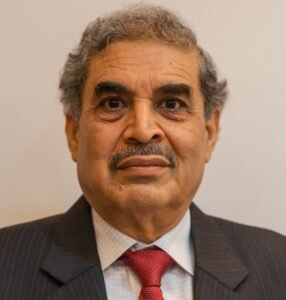Greater Noida (Hridaya Mohan): In today’s high-stakes geopolitical arena, the most powerful battles are fought not with missiles, but with markets. The world’s two largest economies — the United States and China — are rewriting the rules of global trade, turning interdependence itself into an instrument of power. Their latest skirmishes, from soybean bans to rare earth restrictions, are reshaping global supply chains and signalling a new era of economic statecraft. For India, this is not just a story to observe — it’s a strategic lesson to absorb.
China’s Economic Leverage: Subtle but Strategic
China’s rise as the world’s manufacturing hub has given it not only economic scale but also geopolitical leverage. Its recent actions — cutting back on U.S. soybean imports and restricting exports of rare earth minerals — are prime examples of how Beijing uses commerce as a calibrated tool of influence.
For years, American farmers supplied soybeans to China, the world’s largest consumer. But when Washington began challenging Beijing on trade imbalances and technology theft, China quietly turned to Brazil and Argentina. The move hit U.S. farm states hard — a message delivered without a single diplomatic note or military maneuver.
This was economic coercion with political precision — demonstrating that in the age of globalisation, dependence can be vulnerability.
At the same time, China’s dominance over 70% of global rare earth mining and nearly 90% of refining gives it near-monopoly control over materials essential for modern technology — from electric vehicles and wind turbines to precision-guided weapons. When it restricted exports to Japan in 2010, global industries were shaken. The signal was unmistakable: Beijing could weaponise minerals just as others wield oil or gas.
Washington’s Retaliation: Tariffs and Tech Bans
The United States has responded in kind, turning its own market strength into a counter-weapon. President Donald Trump’s latest decision to impose 100% tariffs on Chinese electric vehicles, solar equipment and batteries marks the sharpest escalation in recent years. Washington has also expanded export bans on semiconductor manufacturing tools, AI chips and advanced technologies — aiming to curb China’s industrial and military ambitions.
This economic sparring is not about trade deficits anymore — it’s about technological supremacy and national power.China’s counter-move — restricting exports of gallium and germanium, key metals for chip making — shows that Beijing, too, can strike back with surgical precision.
The result is a fractured global economy, where nations are redrawing their supply maps based not on efficiency, but on security and strategic alignment.
Weaponisation of Interdependence
For decades, interdependence was celebrated as the bedrock of peace — the idea that nations too intertwined in trade would avoid conflict. That notion now lies in ruins. China has mastered the weaponisation of interdependence, turning supply chains into pressure points.
This transformation is not theoretical. It is visible in pharmaceuticals, electronics, green tech and minerals. It is a model of coercive globalisation, where the same systems that once enabled cooperation are repurposed for control.
India’s Strategic Takeaway: Resilience is the New Power
For India, the message is unambiguous: economic sovereignty is the foundation of national security.
Our trade deficit with China exceeds $100 billion and our dependence runs deep — from APIs for essential drugs to semiconductors and solar modules. Any disruption in these inflows could paralyse key industries overnight. The need of the hour is to transform “Atmanirbhar Bharat” from a slogan into a comprehensive, long-term economic doctrine.
Atmanirbhar Bharat: From Aspiration to Architecture
The essence of Atmanirbhar Bharat is not isolationism; it is strategic autonomy through capacity building. To thrive in this new era of weaponised trade, India must pursue three parallel strategies:
- De-risking the Supply Chain: India’s “China +1” strategy must evolve into a national mission. Diversifying import sources — especially for critical inputs like APIs, lithium cells and rare earths — will reduce vulnerability. Strengthening trade partnerships with Japan, Australia, ASEAN and Europe is essential to build a multilayered supply safety net.
- Harnessing Domestic Resources: India holds the fifth-largest reserves of rare earth elements but lacks advanced processing capabilities. The new Critical Minerals Policy and the auctioning of exploration blocks are important steps. What’s needed now is a strong push for R&D, environmentally sustainable extraction and public–private partnerships to create an entire ecosystem from mining to manufacturing.
- Building Strategic Reserves and Technological Depth: Just as we maintain oil reserves, India should develop strategic stockpiles of rare earths, lithium and copper. In parallel, investment in advanced material sciences and clean technologies must rise, supported by the PLI and “Make in India” programs.
Atmanirbhar Bharat, thus, must evolve from self-reliance to self-strengthening — empowering India to compete, not just protect.
Global Alliances: India as a Reliable Alternative
India’s growing partnerships — through the Quad, IPEF and the Mineral Security Partnership — position it as a credible alternative to Chinese overreach. As global firms reconfigure their supply networks, India can become the trusted node in a world seeking stability and transparency.
But this opportunity will be lost if policy execution lags behind intent. India must align industry, innovation and infrastructure — combining economic reforms with technological ambition.
The New Definition of Power
In the 21st century, power lies not in military might alone, but in the ability to control flows — of data, energy and materials. China’s weaponisation of trade has revealed how deeply economic dependencies can shape political behaviour.
For India, the choice is clear. Atmanirbhar Bharat is not a retreat from globalisation; it is a recalibration — building resilience, not retreat. It is the blueprint for how India can rise as a self-assured power, independent yet interconnected, global yet grounded.
As the world edges toward economic fragmentation, India’s best defence is not isolation, but preparedness. And that begins with one enduring truth: in this new world of weaponised trade, economic security is the truest form of national security.
About the Author

Mr. Hridaya Mohan is a regular Columnist with a renowned Indian daily “The Hitavada” and some other newspapers / magazines internationally. Superannuated as Executive Director, Steel Authority of India Ltd. (SAIL), he is Senior Adviser, Metallon Holdings Pvt. Ltd. presently. He headed SAIL office at Beijing as Chief Representative (China & Mongolia) for six years. He has published and presented seventeen papers globally. Recipient of “Sir M Visvesvaraya Gold Medal”for one of his papers, “Benchmarking of Maintenance Practices in Steel Industry” from The Institution of Engineers (India), he was awarded with “Scroll of Honour” for the excellent contributions to Engineering fraternity from IE(I), Bhilai, “Jawahar Award” for leadership excellence in SAIL and “Supply Chain Leader – 2017” award from IIMM.









